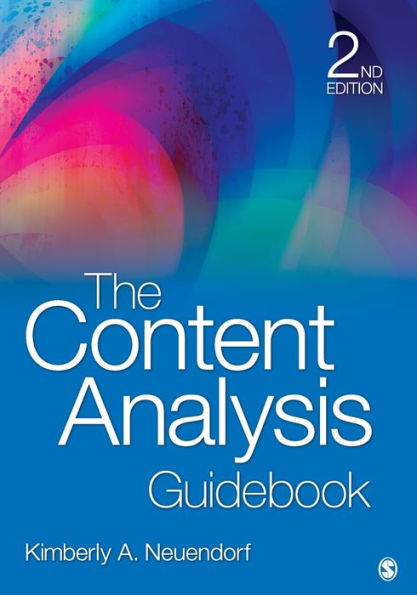Table of Contents
Chapter 1: Defining Content AnalysisAn IntroductionThe Growing Popularity of Content AnalysisThe Myths of Content AnalysisA Six-Part Definition of Content AnalysisChapter 2: An Integrative Approach to Content AnalysisThe Language of the Scientific MethodHuman Coding Versus Computer Coding: A Brief OverviewHow Content Analysis Is Done: A Flowchart for the Typical Process of Content-Analytic ResearchApproaches to Content AnalysisToward an Integrative Model of Content AnalysisUsing the Integrative Model of Content AnalysisChapter 3: Message Units and SamplingUnitsDefining the PopulationArchivesSamplingSample SizeFull ReportageChapter 4: Variables and PredictionsIdentifying Critical VariablesFull ReportageChapter 5: Measurement and ValidityDefining MeasurementValidity, Reliability, Accuracy, and PrecisionValidityTypes of Validity AssessmentValidation Procedures in Content AnalysisOperationalizationExpanding Terminology and Merging Traditions: Big Data, Text Mining, Natural Language Processing, Computational Linguistics, Sentiment Analysis/Opinion Mining, and CATACATA (Computer-Aided Text Analysis)Selection of a Computer Text Content Analysis ProgramHuman CodingIndex Construction in Content AnalysisFull ReportageChapter 6: ReliabilityIntercoder Reliability: An Introduction to Standards and PracticesIssues in the Assessment of ReliabilityPilot and Final ReliabilitiesIntercoder Reliability Coefficients: Issues and ComparisonsCalculating Intercoder Reliability CoefficientsThe Reliability SubsampleThe Use of Multiple CodersIntracoder Reliability—Assessing Stability over TimeUnitizing ReliabilityCalculating Reliability Coefficients: Programs and CalculatorsSpecial Issues in Reliability Coefficient Decision-makingBringing Order to Reliability: Building Models that Specify Sources of VariationFull ReportageChapter 7: Content Analysis in the Interactive Media AgeConsidering Interactive MediaContent Creation in the Interactive Media AgeAcquiring Content in the Interactive Media AgeArchiving Content in the Interactive Media AgeCoding Content in the Interactive Media AgeAutomated Technologies and Measurement on the Moving ImageAlmost Content AnalysisConclusionChapter 8: Results and ReportingData Handling and TransformationsHypothesis TestingSelecting the Appropriate Statistical TestsFrequenciesCo-Occurrences and In-Context OccurrencesTime LinesBivariate RelationshipsMultivariate RelationshipsChapter 9: ContextsPsychometric Applications of Content AnalysisOpen-Ended and Pictorial ResponsesLinguistics and Semantic NetworksStylometrics and Computer Literary AnalysisInteraction AnalysisOther Interpersonal BehaviorsComputer-Mediated CommunicationOrganizational CommunicationHealth CommunicationAdvertisingNewsPolitical CommunicationViolence in the MediaGender Roles in the MediaSex and Sexuality in the MediaMinority PortrayalsMoviesMusicSentiment AnalysisAcademic LiteraturesCommercial, Governmental, and Other Client-Based Applications of Content AnalysisFuture DirectionsResource 1: CATA—Computer Aided Text Analysis OptionsPart I. Computer Aided Text Analysis (CATA) ProgramsPart II: Yoshikoder ExampleResource 2: The Content Analysis Guidebook Online (CAGO)Content Analysis ResourcesMessage Archives and CorporaReliabilityHuman Coding Sample MaterialsIntroduction to Computer Content Analysis (CATA)







